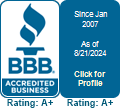Do It Right, Save Money
It should be no surprise to any shipper that misclassification of articles is a leading cause of overcharge claims in LTL shipments. In the NFMC there are 18 applicable classes ranging from 50 to 500. The first challenge is to find a description that best fits the article being shipped – an activity that sounds simple however is very complex. Some of the items listed are very specific and some are very broad. Secondly, after an appropriate description is identified, the corresponding NMFC 100 item number must be further investigated. NMFC item number descriptions detail more specific qualifiers and disqualifiers. If, after comparison, these criteria remain accurate for the article being shipped, then an applicable sub may have to be determined as well. Subs can be determined by using many different qualifiers such as: density, method of shipping (crate, boxes, carboys, etc.), Zone A hazard, hazardous class and/or packaging group, release value, combustible/flammable, knocked down or set up, palletized or loose, weight breaks, or even by material type (lead, alloy, steel). Sometimes there are multiple steps for determining subs, such as first determining the packaging and then density. Bottom line: classifying articles can get very complex, very quickly.
Of special note is the frequent confusion on classifying hazardous materials. Bills of lading often list a primary product with the hazardous ingredient identified in parentheses. The product being shipped should be what is classified, not the hazardous ingredient listed in the parentheses. Imagine shipping a cake. Let’s say the eggs, a common ingredient in a cake, are hazardous. In this case, the bill of lading might read “CAKE (eggs) hazard class 8 packing group III.” When determining the class, CAKE-not eggs-should get the focus.
AMTR’s expert auditors spend years learning about the NMF classifications and apply this knowledge in every truck audit. Classifications can be hard, but AMTR makes it “easy as cake” for our clients!





There are no comments yet, but you can be the first